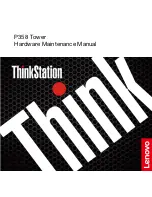
Titra
Lab
®
TitraLab 870 Reference Manual
Page 165
Number of IP
Represents the number of inflection points (1 to 8) to be determined
during a titration run.
Enter in:
Edit method > Method parameters menu (for Monotonic IP, Dynamic
IP or Continuous IP method).
Number of
results
Number of results (1 to 8) to be calculated with the units selected and
the raw results obtained. The raw results are the volumes determined
at each equivalent point.
Refer to "Appendix 3: Result calculations", page 263
.
For a back titration, the number of results is 1 and cannot be
changed.
Enter in:
Edit method > Results
Summary of Contents for TitraLab 870
Page 1: ...TitraLab 870 pH EP IP EC ISE Titration Workstation Reference Manual D21T060...
Page 2: ...D21T060 Printed by Radiometer Analytical SAS 2008 02F...
Page 22: ...TitraLab TitraLab 870 Reference Manual Page 22...
Page 23: ...Practical examples s...
Page 24: ......
Page 32: ...TitraLab TitraLab 870 Reference Manual Page 32...
Page 40: ...TitraLab TitraLab 870 Reference Manual Page 40...
Page 41: ...Glossary...
Page 42: ......
Page 255: ...Appendixes...
Page 256: ......
Page 258: ...TitraLab TitraLab 870 Reference Manual Page 258...
Page 262: ...TitraLab TitraLab 870 Reference Manual Page 262...
Page 280: ...TitraLab TitraLab 870 Reference Manual Page 280...
Page 286: ...TitraLab TitraLab 870 Reference Manual Page 286...
















































